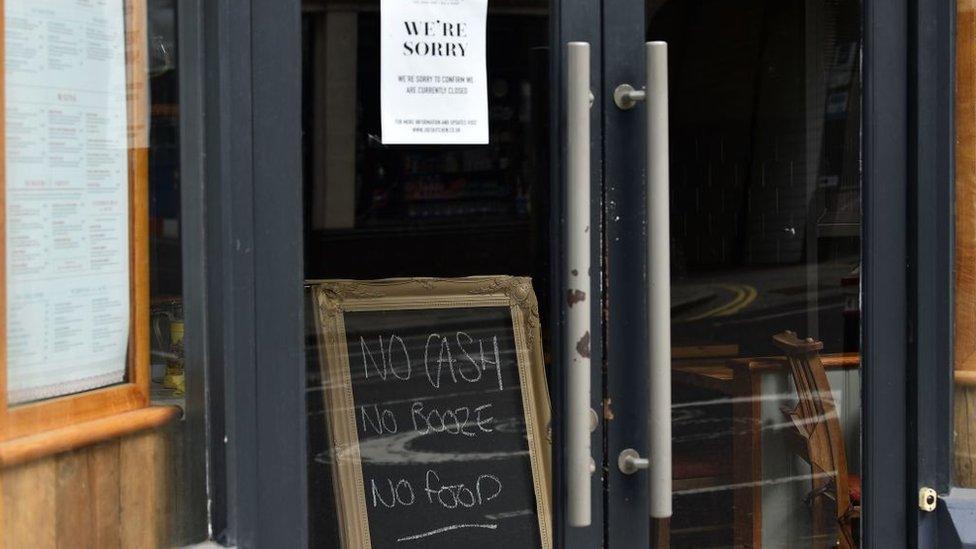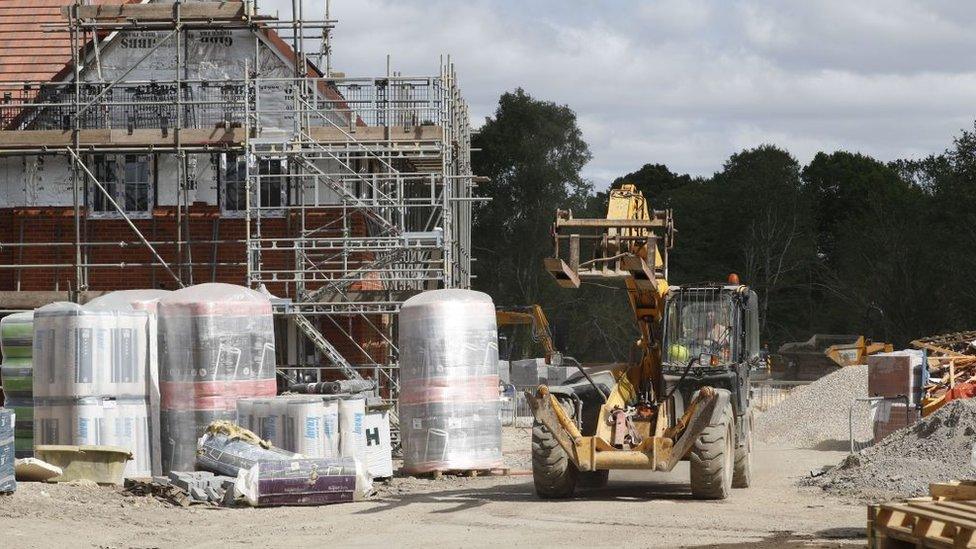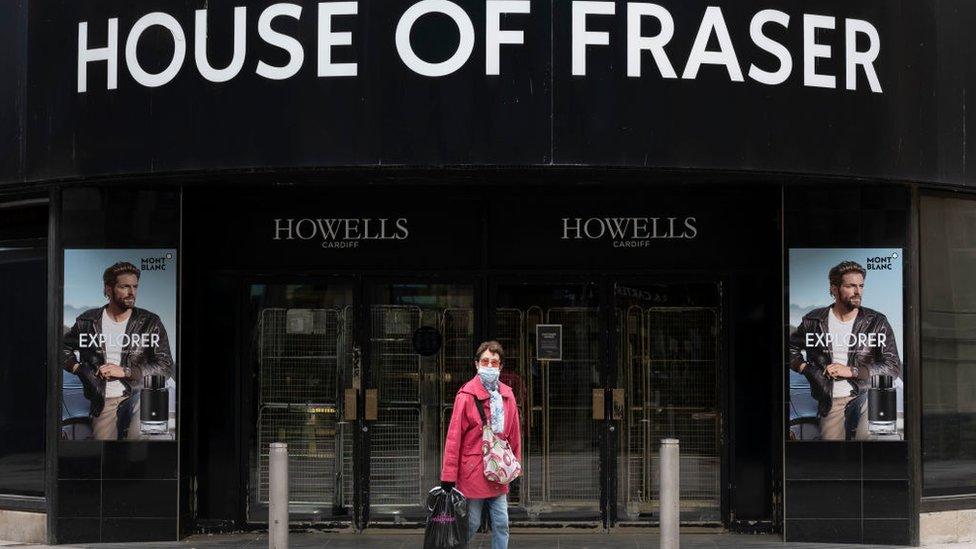Economic crisis is going to last for months
- Published
The job retention scheme to help employers and employees will run for a further four months.
Furlough extension continues the habit of going beyond expectations, and at vast expense.
It' is explicit recognition that this crisis is reaching well into autumn, at least.
Business lending remains sluggish, and is not being linked to job retention - but that could change.
Rishi Sunak is getting a reputation for going well beyond expectations in splurging money.
Asked for a 75% contribution to wages back in March, he surprised with 80%. Asked for an extension to September, he's gone for the end of October.
It's hard to believe this is the same Conservative Party that came to power 10 years ago, and dedicated itself to getting the deficit down.
A furlough, or Jobs Retention Scheme, was originally planned to cover 1 March to the end of May. It was then extended to the end of June.
Now, it's being extended to October. The idea is that those on furlough can still get 80% of pay (up to £2,500 per month) but after the end of July more of that cost should be met by employers.
How much more? We don't know yet. It may be that there are different tapers for different sectors. Those with most cash flow problems, such as hospitality, may have to pay less towards payroll costs.

Restaurants will still be under financial pressure when the lockdown is lifted
The ultimate cost of this enormous wage subsidy for, currently, 7.5m employees of 930,000 firms will depend on how fast government tapers its support. But it will be extremely expensive.
And we've yet to have confirmation of the parallel scheme to support most of the UK's five million self-employed workers, which will surely have to follow, and will add many billions more.
Points worth noting about this: for the first time, we have an explicit concession that the economic crisis is going to last well into autumn.
Job creation
There's a concession to those who said there has to be a part-time option on furlough.
Likewise, there will be an opportunity to get access to training while on furlough. That adds a lot of useful flexibility, and could be allied to the long-running efforts to get productivity up.
The chancellor also said he's talking to trade unions and the CBI employers group about job creation schemes to help those who don't get through to the other side of the crisis in the same job.
But would he provide the funding to support one part of the country continuing lockdown longer than another, Mr Sunak was asked in the House of Commons?
He didn't say, but his statement talks about "continuing to work closely with the devolved administrations to ensure the scheme supports people across the Union". That looks intended to reassure, without committing.
Business interruption
Support schemes for business continue to focus on loans. The Treasury figures released with the furlough announcement do not all make for reassuring reading.
Yes, the Bounce Back Loan is reaching a lot of small firms, with 100% government guarantees for up to £50,000. Nearly £8.4bn has been loaned to 269,000 firms. A further 95,000 applications have been lodged, and either rejected or await processing.

But the Coronavirus Business Interruption Loans (CBILS) are still getting stuck in the banks which administer them, and which want to make sure they're protected for the other 20%.
With 71,000 applications, only 36,000 have been approved, with loans totalling £6.1bn. That's a long way from reckoning of what companies currently need.
For the separate CBIL scheme for larger businesses, there have been 358 applications and only 59 have been approved so far.
Pivot to redundancy
What the business loans still lack, and perhaps deliberately so, is any link to job retention. The two strands of support are not aligned.
It could be that companies taking loans could be required to retain workers, or more likely, incentivised to do so. In the US, as I've noted before, some loans can be turned to equity if employers retain their workforce levels for three years.

Hundreds of thousands of staff in retail and leisure have been furloughed as businesses temporarily closed down
For those firms that are seeing past October to a structural change in what they do and how many people they need to do it, a pivot from furlough to redundancy seems to be under way.
That goes for British Airways, Rolls-Royce aero-engines and P&O Ferries. It even applies to the charity National Trust for Scotland, shedding more than half its workers having had 70% of staff on furlough.
Particularly the big corporates, and moreso those with rich foreign backing, are facing criticism for taking furlough money, intended to sustain employment, only to turn around to furloughed workers and sack them.